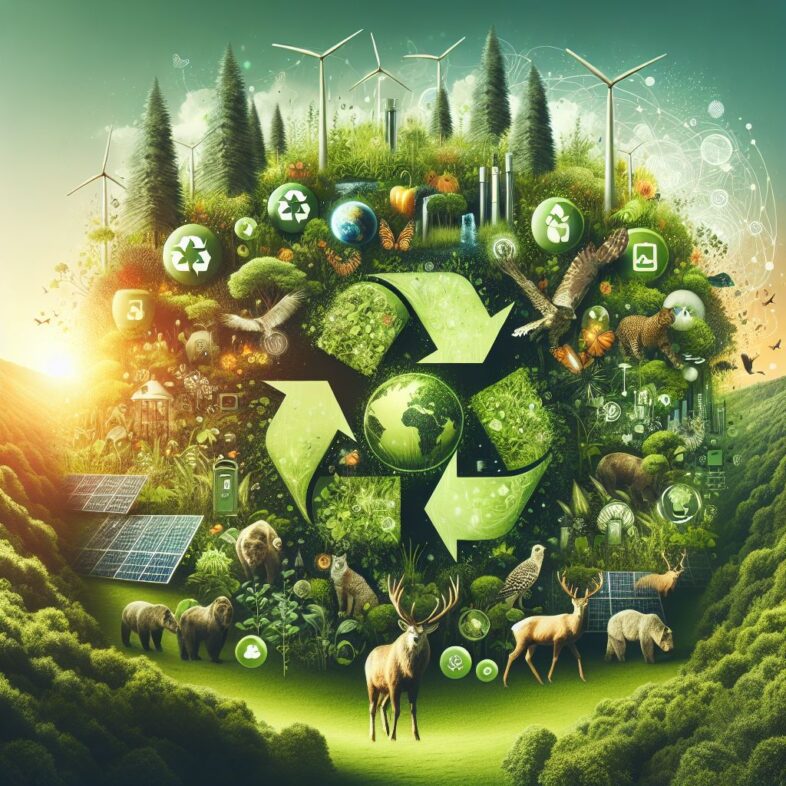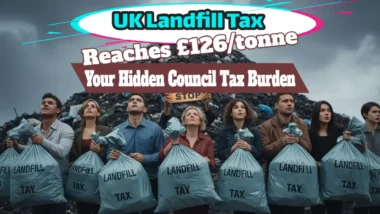Key Points on the Subject of 10 Ways to Reduce Reuse and Recycle
- Switching to reusable alternatives like shopping bags and food containers can eliminate hundreds of single-use items from landfills each year
- Proper recycling techniques, including rinsing containers and checking local guidelines, significantly increase the amount of waste that gets successfully recycled
- Composting can divert up to 30% of household waste from landfills while creating nutrient-rich soil for gardens
- Small, consistent changes like going paperless and buying in bulk create a substantial environmental impact when practised over time
- Environmental organisation EcoPlanet has found that households implementing these practices reduce their waste footprint by 70% within one year
Every day, the average person generates about 4.5 pounds of waste. That's over 1,600 pounds per year per person.
But it doesn't have to be this way. Making simple, practical changes to how we consume and discard items can dramatically reduce our environmental footprint while often saving money and creating a more organised living space.
The 3Rs—reduce, reuse, recycle—provide a framework for sustainable living that anyone can implement, regardless of budget or living situation.
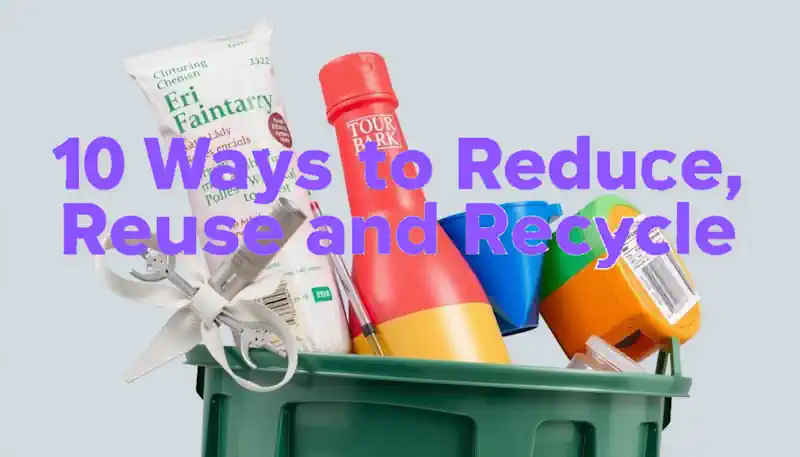
The Hidden Impact of Your Daily Choices
That plastic water bottle you grabbed on the way to work? It will still be around in 450 years.
The stack of junk mail sitting on your counter represents trees harvested, water consumed, and carbon emitted—all for advertisements you didn't request. Even your morning coffee habit, if served in disposable cups, creates about 23 pounds of waste annually.
The good news is that becoming aware of these hidden impacts is the first step toward meaningful change. By making thoughtful adjustments to daily routines, you can significantly reduce your environmental footprint without sacrificing convenience or comfort.
Why the 3Rs Matter More Than Ever
In our increasingly crowded world with dwindling natural resources, the principles of reducing, reusing, and recycling have never been more crucial. Reducing consumption prevents waste before it happens, conserving raw materials and the energy required to manufacture new products.
Reusing items extends their life cycle, keeping them out of landfills while maximising the resources already invested in their creation.
Recycling transforms potential waste into valuable resources, closing the loop on consumption and production cycles. Together, these practices form a powerful strategy for environmental stewardship that benefits not just the planet but also our communities and household budgets.
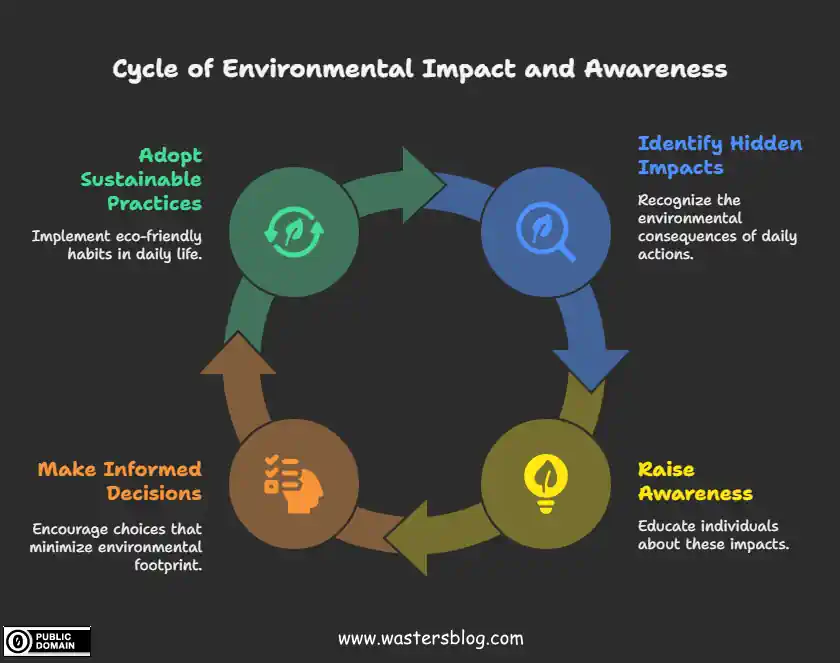
1. Switch to Reusable Shopping Bags
Impact of Reusable Bags: The average family accumulates 1,500 plastic shopping bags annually. Switching to reusable bags can eliminate this waste entirely while preventing wildlife harm and reducing petroleum consumption.
Single-use plastic bags represent one of the most visible forms of consumer waste, with the average bag being used for just 12 minutes before being discarded.
Yet these lightweight culprits can take up to 1,000 years to decompose in landfills, while those that escape into the environment pose serious threats to marine life and wildlife.
Making the switch to reusable shopping bags is perhaps the simplest yet most impactful change you can make in your daily routine.
Not only do quality reusable bags last for years, but they're typically stronger than their plastic counterparts, meaning fewer trips from car to kitchen and less risk of groceries spilling onto the pavement.
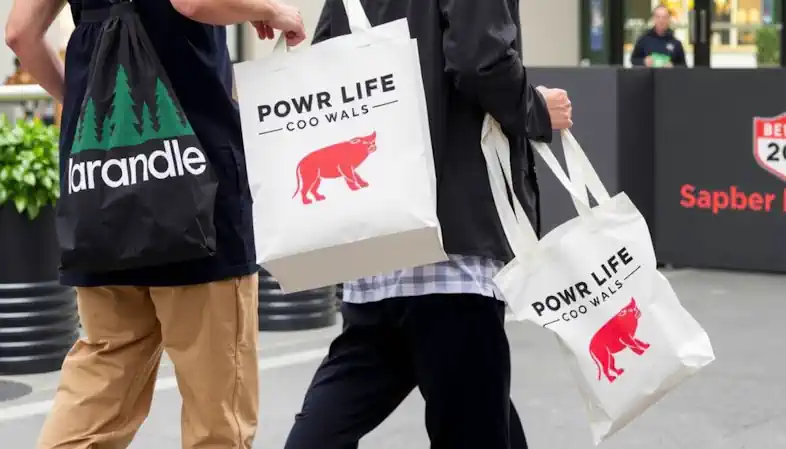
Keep Bags in Strategic Locations
The biggest challenge with reusable bags isn't owning them—it's remembering to use them. Combat “left-the-bags-at-home syndrome” by strategically placing bags where you'll need them. Keep a compact set in your car's glove compartment, another in your work bag, and hang the rest by your front door or on your coat rack.
Some reusable bags now fold into tiny pouches that attach to keychains or slip into pockets, making it nearly impossible to be caught without one.
Create a post-shopping routine where emptying groceries includes immediately returning bags to their designated spots, ensuring they're ready for your next shopping trip.
Best Materials for Durability and Environmental Impact
Not all reusable bags are created equal when it comes to environmental impact. Cotton bags have a high initial ecological footprint due to water-intensive production, but can last for years with proper care.
Recycled PET bags made from plastic bottles offer an excellent compromise, giving new life to existing materials while being lightweight and durable.
Hemp bags provide superior strength with minimal environmental impact, though they typically come at a higher price point. Whatever material you choose, focus on longevity—a bag must be used multiple times to offset its production impact compared to single-use options.
2. Choose Reusable Food Containers
Our food storage choices create surprising amounts of waste, from plastic wrap and aluminium foil to disposable zip-top bags and takeout containers. By investing in a versatile collection of reusable containers, you'll not only reduce this steady stream of trash but also keep food fresher longer.
Glass containers with silicone or bamboo lids offer durability without the concerns associated with plastic, while stainless steel options provide virtually unbreakable storage for lunches and leftovers.
Beyond environmental benefits, a consistent container system creates a more organised refrigerator and pantry, making it easier to see what food you have and reducing food waste through better visibility.

Plastic-Free Alternatives That Last
Plastic containers, while convenient, often contain harmful chemicals like BPA and phthalates that can leach into food, especially when heated. Glass containers offer a safer, more sustainable alternative that won't absorb food odours or stains.
Stainless steel containers, particularly those with divided compartments, are perfect for lunches and picnics, eliminating the need for disposable options.
Beeswax wraps serve as a renewable alternative to plastic wrap, conforming to containers through the warmth of your hands and being washable and reusable for up to a year before composting.
How to Build Your Container Collection Without Breaking the Bank
Quality food storage doesn't have to mean an expensive overhaul of your kitchen. Start by repurposing glass jars from pasta sauce, pickles, or other food items by thoroughly cleaning them and removing labels.
Check thrift stores regularly, where high-quality glass and stainless steel containers often appear at a fraction of retail prices. When purchasing new items, focus on versatility—containers that work in the freezer, oven, and microwave will prove more useful than specialised options.
Build your collection gradually, replacing disposable options with durable alternatives as they wear out or as your budget allows.
3. Start a Kitchen Compost System
Food scraps and yard waste make up nearly 30% of what we throw away—materials that could be composted instead. Starting a compost system captures these resources, transforming potential waste into nutrient-rich soil that gardens thrive on.
The process naturally recycles organic matter through decomposition, creating a closed-loop system that mimics nature's own recycling program. Besides reducing landfill waste, composting helps decrease methane emissions, a potent greenhouse gas produced when organic matter decomposes without oxygen in landfills.
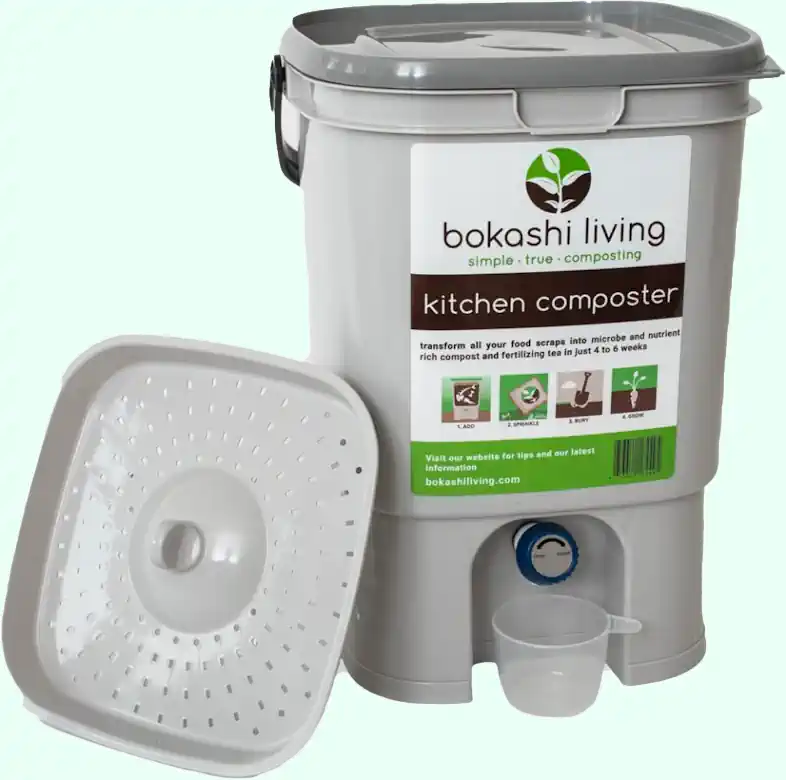
“Bokashi Living | Bokashi Experts” from bokashiliving.com and used with no modifications.
Apartment-Friendly Composting Methods
Limited space doesn't mean limited composting options. Countertop composters using bokashi fermentation can process most food scraps, including meat and dairy, that traditional methods can't handle.
These sealed systems produce no odour and convert kitchen waste into a pre-compost that can be buried in garden soil or donated to community gardens. Vermicomposting (worm composting) offers another apartment-friendly approach, with red wiggler worms quietly processing fruit and vegetable scraps in a compact bin that can fit under a sink.
For those without garden space, many cities now offer compost collection services or drop-off locations, making participation possible regardless of living situation.
What Can and Cannot Be Composted
Successful composting depends on understanding what belongs in your bin. Fruit and vegetable scraps, coffee grounds and filters, eggshells, yard trimmings, and plain paper products all make excellent compost ingredients.
Avoid meat, fish, dairy products, oils, and pet waste in standard backyard compost systems, as these can create odour issues and attract pests.
Compostable bioplastics require industrial facilities and won't break down in home systems despite their eco-friendly labels. Remember that a good compost pile needs a balance of “greens” (nitrogen-rich materials like fresh food scraps) and “browns” (carbon-rich items like dried leaves or newspaper) to decompose properly.
Using Your Finished Compost
After several months of decomposition, your efforts yield dark, crumbly compost with an earthy smell—gardener's gold. Mix this nutrient-rich material into garden soil to improve structure and fertility without chemical fertilisers.
A thin layer of compost makes an excellent mulch for flowerbeds and vegetable gardens, helping retain moisture and suppress weeds. For houseplants, blend compost with potting soil at a ratio of about 1:4 to provide slow-release nutrients that support healthy growth.
Don't have plants? Offer your compost to neighbours, community gardens, or local farms—good compost is always in demand.
4. Go Paperless With Bills and Statements
The average American household receives about 30 pounds of junk mail annually, along with countless bills, statements, and notifications that often go directly from the mailbox to the recycling bin.
Making the switch to paperless communication not only reduces this paper flood but also typically provides better record organisation through searchable digital archives. Most banks, utility companies, and service providers now offer paperless options, often with incentives like waived fees or enhanced features for digital customers.
The environmental impact extends beyond just paper savings—consider the energy, water, and transportation resources conserved when physical mail is eliminated.
Setting Up Auto-Pay and Digital Notifications
Going paperless works best with a systematic approach to managing digital information. Start by creating a dedicated email account for bills and financial communications to keep these important messages separate from everyday correspondence.
Set up automatic bill payments where appropriate to avoid late fees, but maintain payment notifications so you're aware when money leaves your account.
Create calendar reminders for any bills that can't be automated, ensuring nothing falls through the cracks.
Digital payment platforms like PayPal, Venmo, and Zelle offer paperless alternatives for person-to-person transactions, eliminating the need for checks and their associated waste.
Secure Digital Record-Keeping
Maintaining secure, accessible digital records is crucial when eliminating paper copies. Cloud storage services like Google Drive, Dropbox, or OneDrive provide secure locations for important documents with the added benefit of accessibility from any device.
Organise your digital files with a consistent naming convention that includes document type and date for easy retrieval later.
Set up a quarterly routine to review and archive older documents while deleting unnecessary files to prevent digital clutter.
For critically important documents like tax returns or legal papers, consider maintaining encrypted backups on an external hard drive as an additional precaution.
5. Replace Disposables With Reusable Alternatives
Our homes are filled with single-use items that create unnecessary waste and drain our wallets through repeated purchases. Addressing this is another of our 10 Ways to Reduce, Reuse and Recycle list. Paper towels, disposable razors, dryer sheets, and coffee pods all offer convenience at a significant environmental cost.
By strategically replacing these items with durable alternatives, you'll not only reduce waste but also often enjoy superior performance from higher-quality reusable products.
The initial investment might be higher, but the long-term savings are substantial – a set of quality cloth napkins can last decades compared to the constant repurchasing of paper versions.
Kitchen Swaps That Save Money
The kitchen generates more daily waste than perhaps any other area of the home. Replace paper towels with a collection of cloth cleaning rags cut from old t-shirts or dedicated “unpaper towels” that can be washed and reused hundreds of times.
Silicone baking mats eliminate the need for parchment paper and aluminium foil while providing a superior non-stick surface. Ditch plastic wrap in favour of silicone stretch lids that fit various container sizes or beeswax wraps that mould to bowls and food items with the warmth of your hands.
For coffee lovers, a simple reusable filter or French press eliminates daily pod waste while often producing better-tasting results.
Bathroom and Personal Care Switches
Bathroom routines create surprising amounts of plastic waste through disposable razors, cotton rounds, and product packaging. Safety razors with replaceable metal blades offer a closer shave than plastic counterparts while generating minimal waste – just the small metal blade needs replacement.
Washable cotton rounds made from organic cotton or bamboo replace disposable makeup remover pads, working effectively with your favourite cleansers and toners. Solid shampoo and conditioner bars eliminate plastic bottles entirely, often lasting longer than liquid versions while taking up less space in your shower.
Even dental care can go greener with biodegradable bamboo toothbrushes and refillable floss containers that minimise waste.
Office and School Supplies
Work and education environments often default to disposable options out of habit rather than necessity. Refillable pens and mechanical pencils eliminate the need to discard the entire instrument when ink or lead runs out. Addressing this is another of our 10 Ways to Reduce, Reuse and Recycle list.
Reusable notebooks with specialised pages that can be wiped clean after digitally scanning notes provide endless writing surfaces without consuming paper. For lunch packaging, bento-style containers with multiple compartments eliminate the need for disposable sandwich bags and plastic wrap.
When paper use is unavoidable, opt for recycled content and establish a collection system for single-sided printouts that can become scratch paper before eventually being recycled.
Addressing this is another of our 10 Ways to Reduce, Reuse and Recycle list.
6. Master Proper Recycling Techniques
Despite good intentions, recycling mistakes can send recoverable materials to landfills or contaminate entire batches of recyclables.
Understanding what, how, and where to recycle significantly increases the effectiveness of your efforts. While recycling systems vary by location, learning your local guidelines and developing consistent habits ensures your carefully sorted items actually get processed into new products.
Effective recycling creates a circular economy where materials maintain their value rather than becoming waste, reducing the need for virgin resource extraction while conserving energy and water.
Recycling Impact: Recycling one ton of paper saves 17 trees, 7,000 gallons of water, 380 gallons of oil, and 3.3 cubic yards of landfill space. Aluminum recycling saves 95% of the energy required to produce new aluminum from raw materials.
Common Recycling Mistakes to Avoid
Well-intentioned “wishcycling” – tossing questionable items in the recycling bin, hoping they'll be recyclable – actually creates problems by contaminating legitimate recyclables.
Pizza boxes soiled with grease, plastic bags that tangle sorting machinery, and containers with food residue all compromise recycling streams. Plastic items smaller than a credit card typically fall through sorting equipment and won't be recycled regardless of their material.
Mixed materials present another challenge – coffee cups with plastic linings, bubble mailers with paper exteriors, and blister packaging combining cardboard and plastic all require special handling that most municipal systems can't provide.
When in doubt about an item's recyclability, check your local guidelines or place it in the trash rather than risking contamination.
Understanding Local Recycling Guidelines
Recycling programs vary dramatically between communities based on available facilities and market demand for materials.
Visit your city or county's waste management website to find specific guidelines for your area, which typically include accepted materials, preparation requirements, and collection schedules. Many localities now offer smartphone apps that scan product barcodes to provide specific disposal instructions for your area.
Understanding the “numbers” on plastic containers (the resin identification codes 1-7) helps determine recyclability, though not all numbers are accepted in all programs. Stay informed about program changes, as shifting markets and technologies frequently update what can be recycled.
Preparing Items for Recycling
Proper preparation ensures your recyclables actually get recycled instead of being rejected during sorting.
Rinse containers to remove food residue, but don't waste excessive water – a quick rinse is sufficient for most items. Remove caps from plastic bottles unless your program specifically accepts attached caps, as different plastics may require separate processing.
Addressing this is another of our 10 Ways to Reduce, Reuse and Recycle list.
Flatten cardboard boxes to save space in collection bins and ensure efficient transportation. Keep paper dry and separate from containers to prevent contamination from residual liquids.
For electronics, batteries, and hazardous materials like paint, research special collection events or drop-off locations in your community, as these items require specialised handling beyond standard recycling programs.
Concluding – 10 Ways to Reduce, Reuse and Recycle list
Recycling is an essential practice that helps conserve resources and reduce waste. By understanding the top reasons for recycling, individuals and communities can make informed decisions that benefit the environment.
Implementing effective recycling habits can significantly decrease the amount of waste sent to landfills, promote sustainability, and contribute to a healthier planet for future generations.


